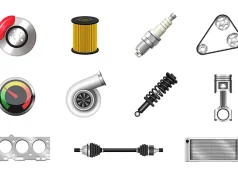
Taking a road trip offers the thrill of new experiences, but with the freedom of the open road comes responsibility. As exciting as it is to get behind the wheel, the reality is that safety must always come first. No one ever expects something to go wrong, but even the best-laid plans can unravel if you’re unprepared. Whether you’re heading for a weekend getaway or embarking on a longer journey, ensuring you are fully ready for any eventuality will make the difference between a smooth trip and one fraught with unnecessary stress.
Essential Vehicle Checks Before You Hit the Road
Before you set off, it’s crucial to ensure your vehicle is in good condition. A few simple checks can help prevent an unfortunate breakdown during your trip. Start by inspecting your tyres, look for signs of wear, and make sure they are properly inflated. Low tyre pressure or worn-out tyres can severely affect your handling and fuel efficiency.
Next, check the oil levels and ensure your engine is running smoothly. If you haven’t recently, it’s worth topping up or changing the oil to avoid engine trouble.
Don’t forget the lights; ensure all headlights, brake lights, and indicators are working, as these are critical for your visibility and safety on the road. Lastly, check the wiper blades, especially if you’re expecting rain or fog during your journey. Replace them if they’re worn to ensure a clear view of the road.
By tackling these basic checks, you’ll significantly reduce the likelihood of something going wrong and keep your journey as smooth as possible.
Getting the Right Coverage
Before hitting the road, make sure your car insurance covers your entire trip. Whether you’re driving within the UK or heading abroad, having the right coverage is key to avoiding costly surprises.
Some insurance policies might not provide sufficient coverage if you’re travelling in a different region, especially if you’re crossing borders into another country. It’s wise to contact your insurance provider before your journey to confirm you have adequate protection. If you plan to travel abroad, confirm whether your policy includes breakdown cover, third-party liability insurance, or any additional coverage you might need in foreign territories.
Having the right car insurance gives you peace of mind, knowing you’re financially protected if something unexpected happens. A quick call to your insurer could save you from complications down the road.
What to Bring for Safety and Comfort
Packing smart can make all the difference when you’re on a long drive. Aside from the obvious essentials, such as your driver’s licence and registration documents, think about what you’ll need for both safety and comfort. A well-stocked first aid kit should be at the top of your list, including basic supplies like bandages, antiseptic, pain relief, and any personal medications you may need.
It’s also a good idea to have water and snacks on hand, especially for longer stretches without easy access to shops. Keeping yourself hydrated and nourished can help you stay focused, while a healthy snack can stave off hunger during those long hours on the road. Along with these practical items, pack a few comfort essentials like a blanket or neck pillow for resting during stops, and perhaps a power bank to keep your devices charged for navigation or emergencies.
Navigating the Roads: Planning and Staying Alert
Make sure you have a clear route mapped out, and include planned rest stops to avoid driving when you’re tired. Consider the road conditions and expected traffic along your route. In some cases, it’s best to travel during daylight hours for better visibility and to avoid unexpected weather conditions, like fog or snow. Always check the weather forecast for your destination and along the way.
Staying alert is equally important. Take regular breaks, especially if you’re feeling drowsy, and avoid distractions while driving. Stay focused on the road to react swiftly in case of sudden hazards. Good planning and alertness reduce the likelihood of accidents and improve the overall enjoyment of the journey.
Handling Emergencies: What to Do if Things Go Wrong
Despite all the preparation, emergencies can still arise. Knowing how to handle these situations will help you manage them calmly and effectively. If you experience a breakdown, the first step is to stay calm and ensure you’re in a safe spot, pull over to the side of the road, away from traffic if possible. Always have your hazard lights on and, if necessary, call for roadside assistance.
If you’re in a situation involving an accident, make sure to contact the authorities and exchange details with other parties involved. Having a charged phone is vital for contacting emergency services if needed. It’s also wise to have the contact information for your breakdown cover or insurance provider readily available.





